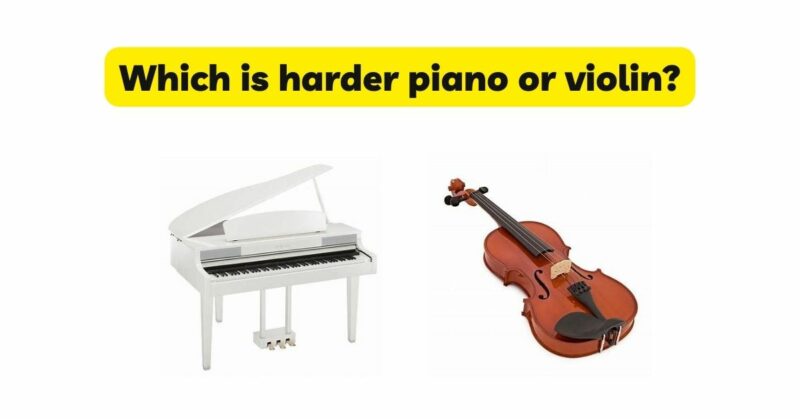The question of which instrument is harder to learn, the piano or the violin, has long sparked lively discussions among musicians and enthusiasts alike. Both instruments require dedication, practice, and a commitment to musical growth. In this article, we will delve into the unique challenges posed by each instrument and explore various aspects such as technical complexity, physical demands, musicality, and individual learning preferences. By examining these factors, we aim to provide a balanced perspective on the difficulty comparison between the piano and the violin.
- Technical Complexity: Both the piano and the violin present distinctive technical challenges. The piano requires the mastery of independent finger movements, hand coordination, and precise timing. Learning to navigate the keyboard, read sheet music, and interpret complex musical passages can be demanding. Additionally, playing the piano involves developing a sense of touch, dynamics, and expression through control of the keys. On the other hand, the violin demands precise finger placement, bowing technique, and intonation. Coordinating the bow arm, finger movements, and adjusting pitch require careful attention and practice. The violin also presents challenges in producing a clear and resonant sound. While both instruments have their technical complexities, the specific challenges may vary based on individual aptitude and previous musical experience.
- Physical Demands: Physical demands are a significant aspect of assessing the difficulty of an instrument. Playing the piano requires finger strength, dexterity, and endurance. The repetitive motion of striking the keys for extended periods can lead to fatigue. Additionally, the coordination of both hands and the use of pedal control adds to the physical demands. Conversely, the violin places demands on posture, balance, and muscle control. Holding the violin under the chin, maintaining a relaxed bowing arm, and executing precise finger movements require physical coordination and strength. The violin also requires finger flexibility and stamina to produce clear and resonant sounds. While both instruments have physical demands, the extent and nature of these demands may differ, making it subjective to determine which instrument is harder based on physicality alone.
- Musicality and Expression: Both the piano and the violin require musicality and expression, albeit in different ways. The piano offers a wide range of expressive possibilities, allowing for complex harmonies, chords, and melodic lines. Expression on the piano involves controlling dynamics, articulation, and phrasing. The performer must interpret the music and convey emotions effectively. On the other hand, the violin offers a unique avenue for expressiveness through bowing techniques, vibrato, and nuanced finger placement. Playing the violin requires a keen ear for intonation, tone production, and shaping phrases. The challenges of musicality and expression are inherent to both instruments, and the perceived difficulty may vary based on individual preferences and strengths.
- Learning Preferences and Background: Individual learning preferences and backgrounds play a crucial role in determining the perceived difficulty of an instrument. Some individuals may find the tactile nature of the piano more accessible, as it provides visual representation of the music on the keyboard. Others may have a natural affinity for string instruments, finding the physicality and expressiveness of the violin captivating. Previous musical experience or exposure to related instruments can also influence one’s perception of difficulty. Learning style and preferences are subjective and can vary from person to person, making it important to consider individual factors when assessing instrument difficulty.
- Commitment and Practice: The true measure of difficulty lies in one’s commitment, dedication, and consistent practice. Both the piano and the violin require regular, focused practice to develop proficiency. The amount of time and effort invested in practice is a determining factor in mastering either instrument. Consistency, perseverance, and a growth mindset are essential for overcoming challenges and reaching one’s musical goals, regardless of the instrument chosen.
Conclusion: Determining which instrument, the piano or the violin, is harder to learn is subjective and influenced by various factors. Technical complexity, physical demands, musicality, learning preferences, and individual background all contribute to the perceived difficulty. Both instruments require dedication, practice, and a commitment to musical growth. Rather than focusing on comparing their difficulty, it is more important to embrace the unique challenges and rewards that each instrument offers. Whichever instrument you choose, approach it with passion, patience, and a willingness to learn. With dedication, perseverance, and guidance from qualified instructors, you can overcome the challenges and embark on a fulfilling musical journey, regardless of whether you choose the piano or the violin.


